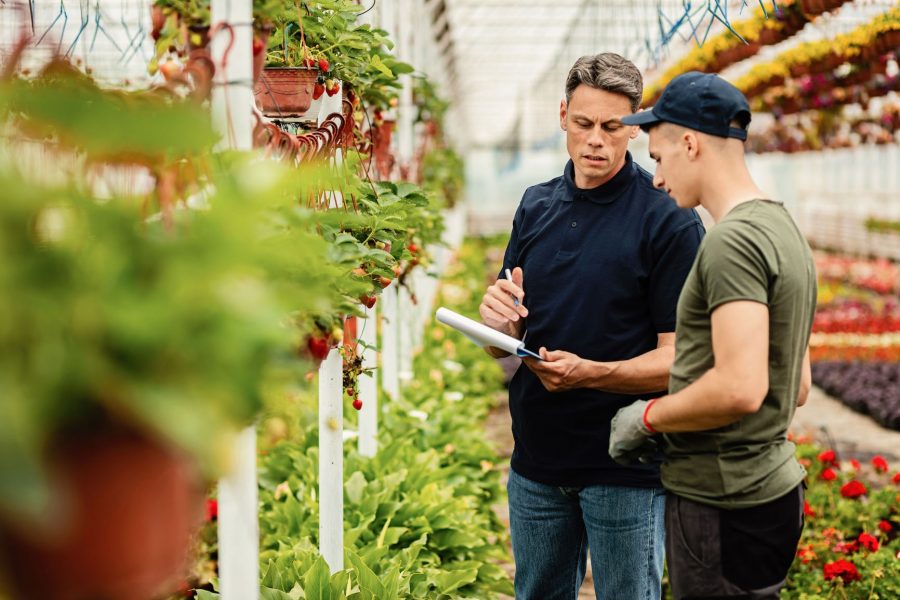
Features
News
Business
Management
Greenhouse workers concerned about heights
November 28, 2019 By Meagan Wadeson WSPS

The greenhouse sector in Ontario is a robust industry. Covering 14.4 million square metres of land and employing over 16,000 workers, these agriculture operations are responsible for some of the tastiest fruit and vegetables on consumer tables, and the prettiest flowers and plants.
Unfortunately, greenhouse and other agriculture workers are at great risk; experiencing higher lost-time injury rates than any other Schedule 1 sector over the last six years.
Data tells us that most of these injuries occur as a result of contact with equipment or exertion, but the numbers alone cannot express the day-to-day realities of greenhouse workers.
The truth is, these workers are afraid of falling. Or at least, that is what they told us.
Zeroing in on their greatest fear
“The good news is that injury rates in this sector have declined over time; however, they still lag behind others,” explains Dean Anderson, Strategic Advisor – Agricultural Initiatives at Workplace Safety & Prevention Services. “You could chalk this up to a general lack of awareness to health and safety risks and obligations, but I believe it’s more a result of how we approach prevention.”
So, in an attempt to get different results, a different approach was taken.
In 2015 the Ontario Ministry of Labour, Training and Skills Development decided to work directly with industry on the topic. The goal was to identify the area of greatest risk so prevention efforts could be targeted and realize more effective results.
During a two-day workshop, employers and workers from flower and vegetable greenhouses explored over 100 industry specific risks. The questions were simple: What situations in your workplace could result in injury or illness? How real of a threat did they pose?
Although not identical, worker and employer risk ratings were very similar, with Working at Heights identified as the top risk facing the greenhouse industry.
“It may not be the most frequent injury experienced on the job, but we learned it’s the top thing keeping them up at night,” explains Dr. Sujoy Dey, Chief Risk Officer for the Ministry of Labour, Training and Skills Development and project lead.
Focusing prevention efforts
“Research tells us that truly effective and sustainable change is more apt to occur if the root cause is identified and acted upon,” states Dr. Dey. As such, workshop participants primarily representing flower greenhouses were brought back to conduct a root cause analysis on the hazard of Working at Heights. The hope was to learn the primary workplace factors that contributed to these risks.
“When a health and safety incident occurs, it is common for employers and supervisors to correct the direct hazard at fault,” explains Tom Baker, a Bayview Flowers employer representative involved in the study. “Unfortunately, in doing this we may miss what really is to blame.”
The root cause analysis participants agreed the top 10 primary causal factors for injury while working at heights were:
1. Lack of fall protection (anchoring points)
2. Lack of reporting near-miss/non-reportable events
3. Incompatibility with new technology or process
4. Not fit for duty
5. Lack of a preventative maintenance program
6. Workplace parties not open to change
7. Education of new/existing employees on following rules
8. Failure to follow policies and procedures
9. Lack of management enforcement on PPE
10. “Safety” as a performance factor
Participants also listed a set of plausible controls for each so that information from this project could be actioned quickly. All solutions presented were practical; not legislative, regulatory or enforcement based.
“The information garnered from these two studies is a gold-mine,” exclaims Anderson. “Knowing what prevention efforts will make the biggest impact is invaluable insight that will allow us to make evidence-based decision making.”
Workplace Safety & Prevention Services will be taking the knowledge gleaned from these workshops back to their solutions development teams and will be inviting further industry participation to select, adapt and/or develop targeted intervention strategies over the next year and a half.
“We’re excited to put this information into action and to develop solutions that truly matter to the greenhouse industry and its people,” says Anderson.
Meagan Wadeson is the Communications Lead for WSPS. She can be reached at meagan.wadeson@wsps.ca, (905) 614-1400 ext. 2233.
For more on workplace safety, visit OHS Canada magazine ohscanada.com
Print this page